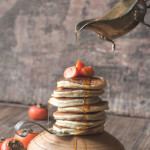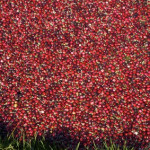Prior to 2014, U.S. states and Canadian provinces each had separate systems for grading their maple syrup. The objective was to quantify the syrup’s distinct range of colors and flavors as the sugaring season progressed. Early in the season, sap tends to yield a lighter, more delicate syrup with vanilla flavor notes. As the weeks go by, darker syrup with stronger, deeper flavor is produced. Whatever the color and flavor, all pure maple syrup has a maple sugar content of 66.9%.
Where there used to be three grades (A through C), all pure maple syrup is now considered Grade A, and consumers must shift their attention to the descriptive language found after the letter grade. Those adjectives have also changed to give more detail.
Golden Color & Delicate Taste: The lightest and most delicate syrup, best enjoyed in poured-over form; formerly known as “Fancy.”
Amber Color & Rich Flavor: Amid-season syrup, darker and more robust. Good for glazes, baking, and stirring into cocktails or over hot cereal; formerly known as Dark Amber or Grade B.
Very Dark & Strong Flavor: The darkest and most intense of all the grades, it’s suited to use in recipes that call for molasses. Until recently, this syrup wasn’t sold to consumers: it went to candy and commercial food producers for maple-flavored products. Formerly known as Grade C.
“Work With What You Got!”
©Tiny New York Kitchen © 2018 All Rights Reserved
The average life expectancy for men was 47 years old.
Americans spent 1/3 of their income on food.
Children remained under their parents’ roofs until they were married.
Fuel for cars was only sold in drug stores.
Only 14 percent of the homes had a bathtub.
Only 8 percent of the homes had a telephone.
Ten percent of infants died in their first year.
The maximum speed limit in most cities was 10 mph.
Men wore blue serge suits at work.
The tallest structure in the world was not in the U.S., but was France’s Eiffel Tower.
The average U.S. wage in 1910 was 22 cents per hour.
The average U.S. worker made between $200 and $400 per year.
A competent accountant could expect to earn $2,000 per year.
A dentist could make $2,500 per year.
A veterinarian could make between $1,500 and $4,000 per year.
A mechanical engineer could make about $5,000 per year.
More than 95 percent of all doctors had no college education. Instead, they attended so-called medical schools, many of which were condemned in the press and the government as “substandard.”
Sugar cost 4 cents per pound.
Eggs were 14 cents per dozen.
Coffee was 15 cents per pound.
Most women only washed their hair once a month. They used Borax or egg yolks for shampoo.
Canada passed a law that prohibited poor people from entering into their country for any reason.
The five leading causes of death were: Pneumonia and Influenza, Tuberculosis, Diarrhea, Heart Disease, and Stroke.
The American flag had 45 stars.
The population in Law Vegas, Nevada was only 30.
Crossword puzzles, canned beer and iced tea hadn’t been invented yet.
There was neither a Mother’s Day nor a Father’s Day.
Two out of every 10 adults could not read or write.
Only 6 percent of all Americans had graduated from high school.
Marijuana, heroin and morphine were all available over the counter at local drug stores. Back then pharmacists said, “Heroin clears the complexion, gives buoyancy to the mind, regulates the stomach, bowels, and is, in fact, a guardian of health.”
18 percent of households had at least one full-time servant or domestic help.
There were about 230 reported murders in the ENTIRE United States.
It’s amazing how fast everything has changed and it’s impossible to imagine what it will be like in another 100 years!
“Work With What You Got!”
© Victoria Hart Glavin Tiny New York Kitchen © 2017 All Rights Reserved
Tiny New York Kitchen Wishes All Of our Canadian Friends A Very Happy Thanksgiving!
“Work With What You Got!”
© Victoria Hart Glavin Tiny New York Kitchen © 2015 All Rights Reserved
The Vineyard Open Land Foundation maintains an organic cranberry bog in the hills of Lambert’s Cove. The bog is a rarity because only about 1 percent of the U.S. and Canada’s cranberries are grown organically. Old wooden machines are still used to harvest, winnow, and sort the berries.
“Work With What You Got!”
© Victoria Hart Glavin Tiny New York Kitchen © 2015 All Rights Reserved









